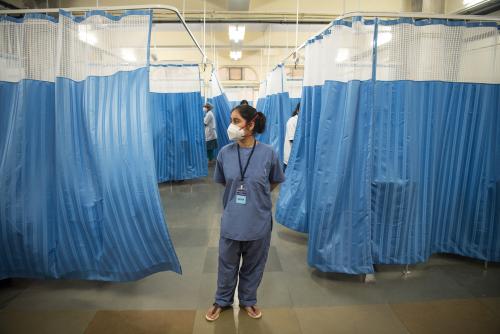

1:30 am IST - 3:00 am IST
Past Event
Content from the Brookings Institution India Center is now archived. After seven years of an impactful partnership, as of September 11, 2020, Brookings India is now the Centre for Social and Economic Progress, an independent public policy institution based in India.

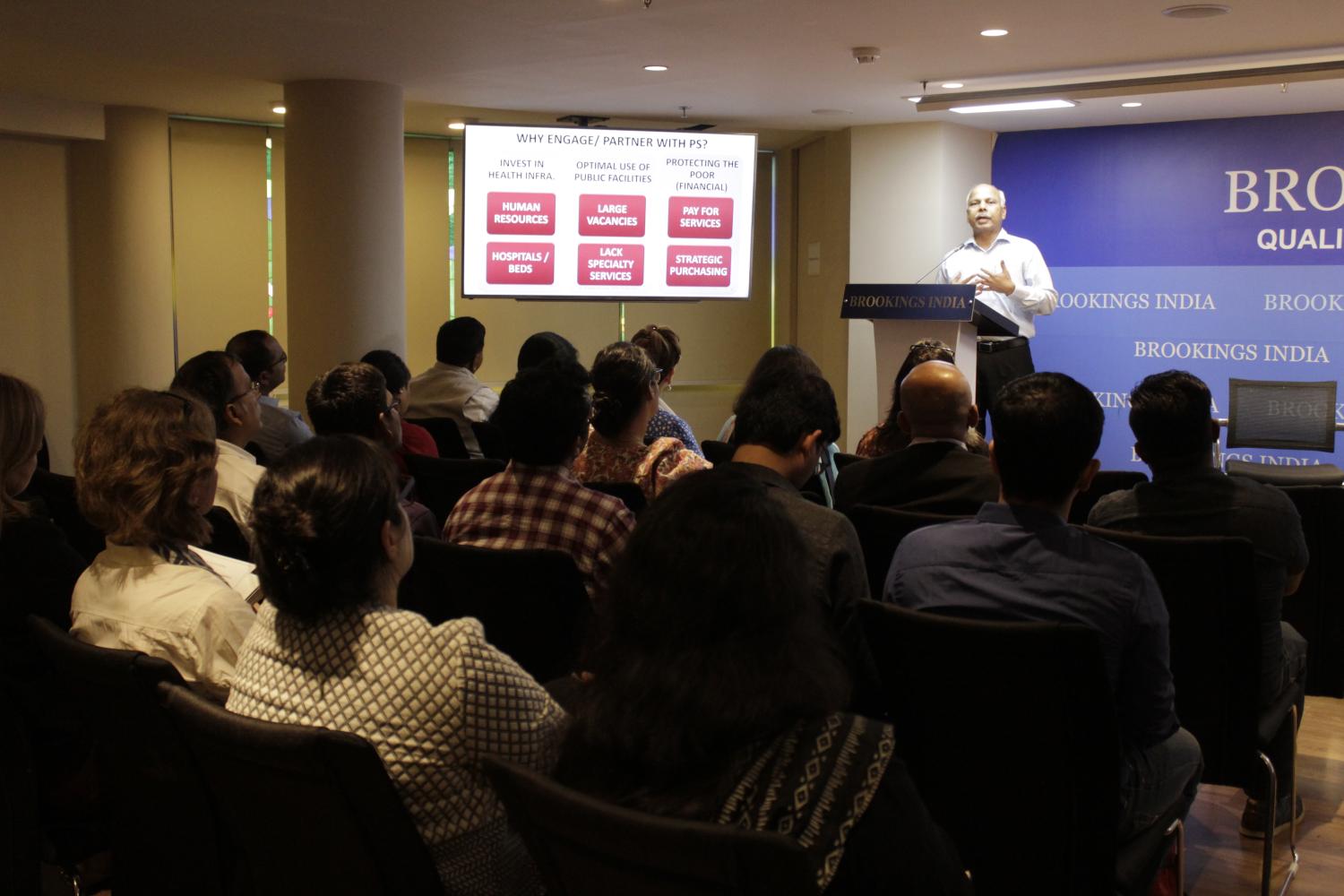
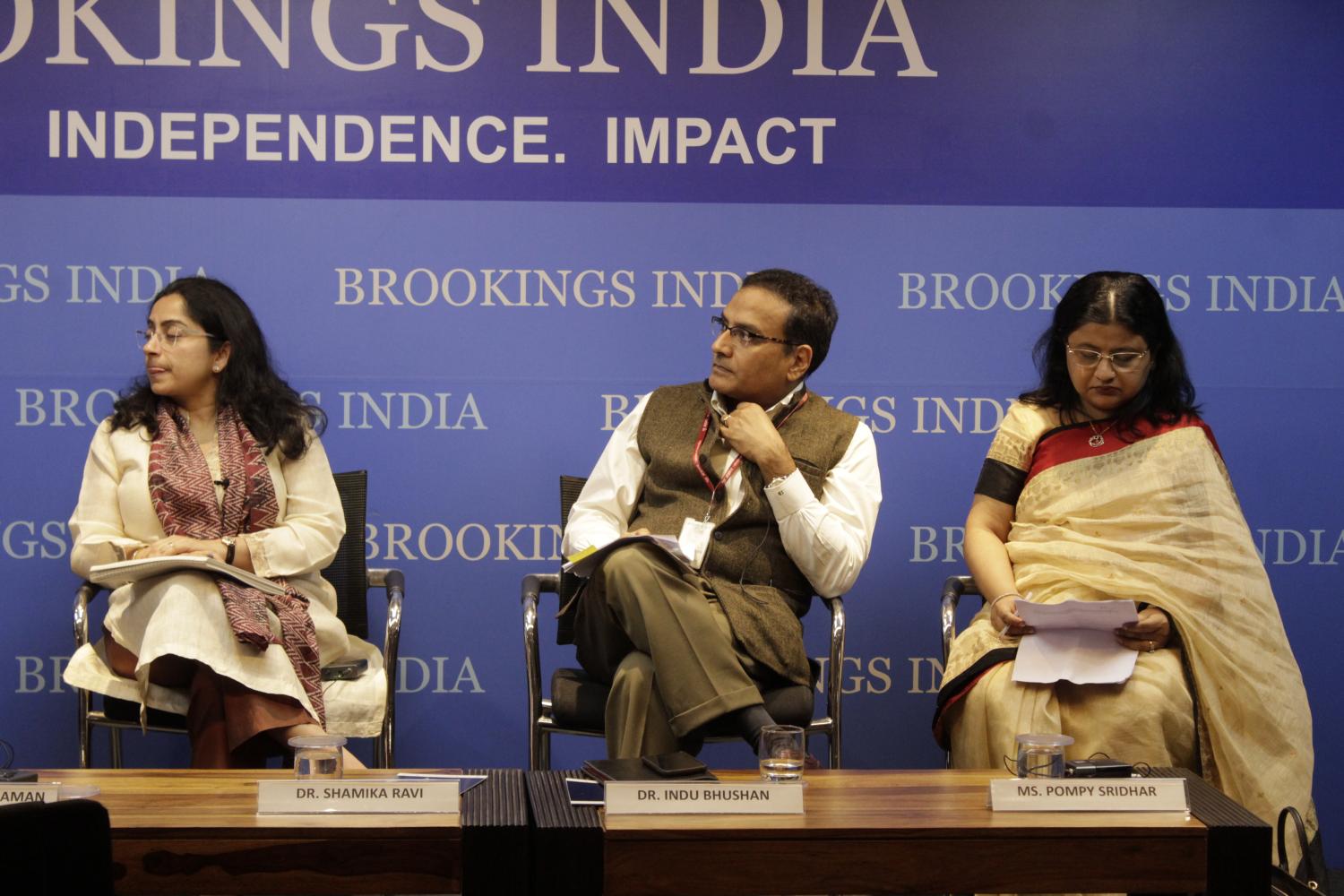
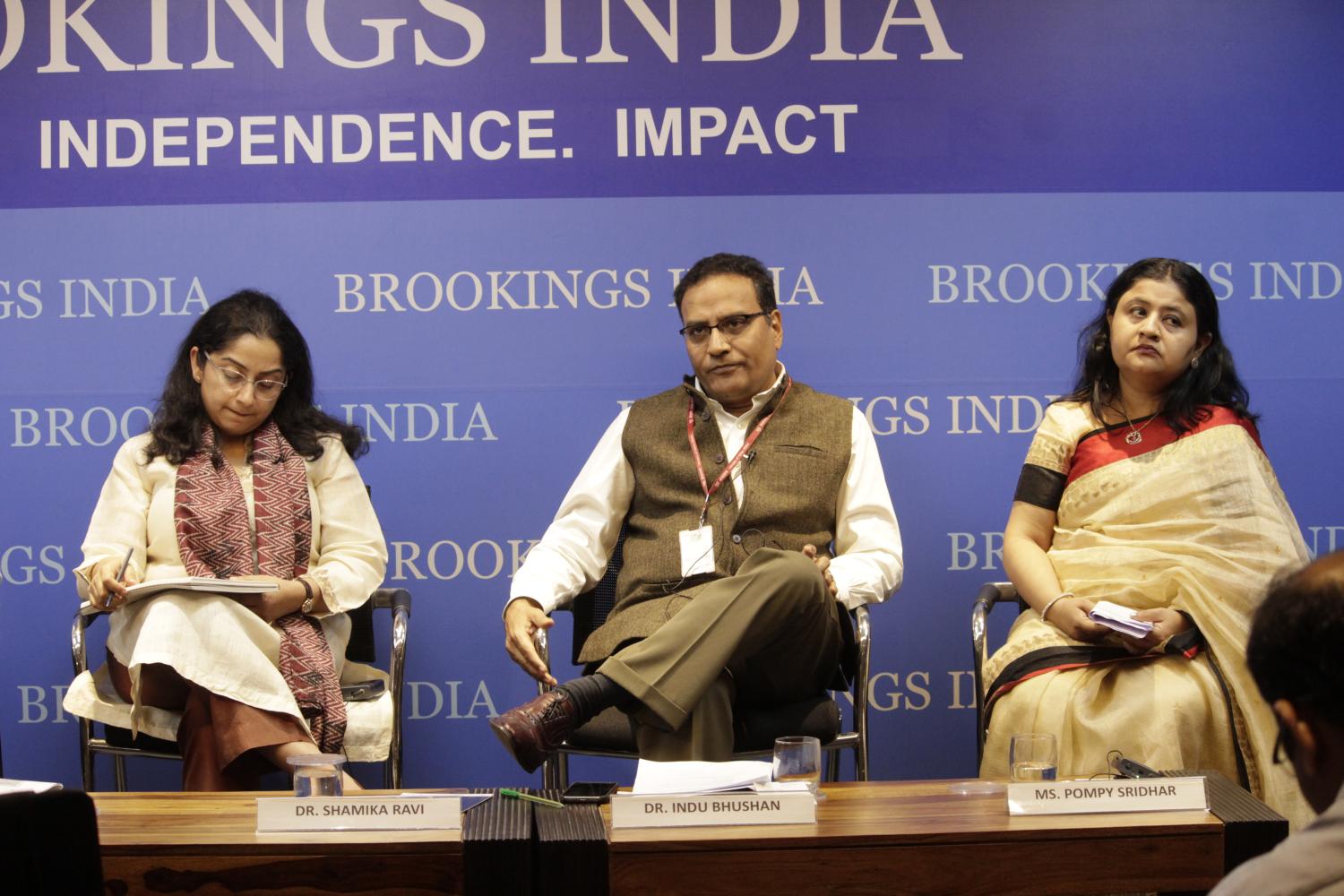
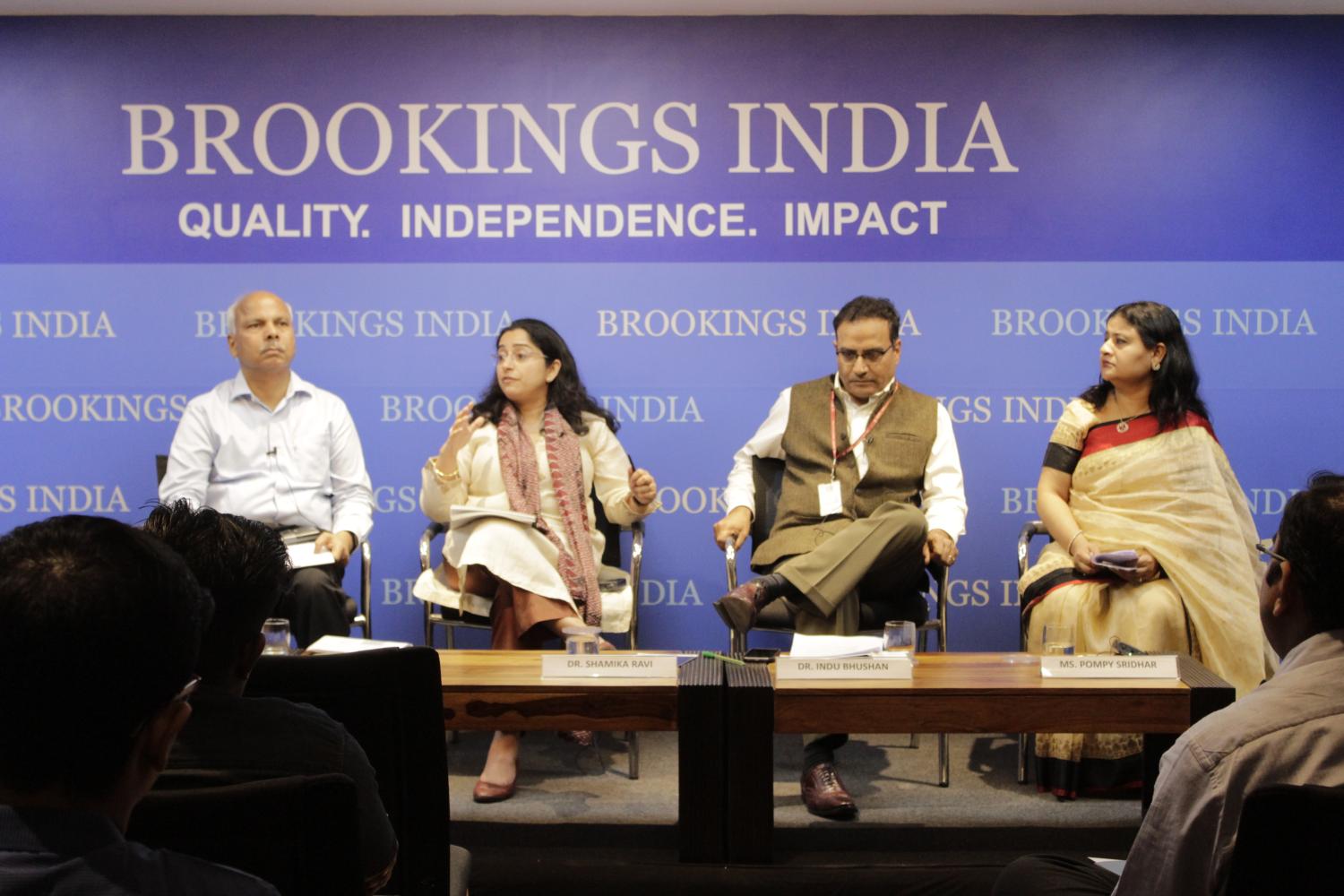
By Paavi Kulshreshth
Significance of private sector engagement
During the seminar, Prof. Raman outlined three key reasons that reinforced the need for private sector engagement or partnership in the Indian health sector. First was the protection of economically weaker sections of society; second, augmenting investment in health infrastructure; and third, ensuring optimal use of public facilities.
Pompy Sridhar spoke in detail of the high maternal mortality rate in India and how MSD for Mothers aims at using private sector expertise for solving global health challenges. She said that, “Fifty-one percent of Indian households incur heavy out-of-pocket expenditure to access maternity care – but this has not resulted in improved maternal health outcomes”. She highlighted the need to not only bring in private capital but also work with private sector players, within India and across the globe, (i) to pool money, (ii) work on the private sector and building social enterprises, and (iii) to work with the local private providers.
Building on the points raised by the two speakers, Dr Bhushan added, “Most of the tertiary level treatment and treatments for serious illnesses are being provided by the private sector… So we see a huge role for the private sector going forward.” Dr Ravi shared that 75% of the OPD is private and 55% is exclusively private, summing up the significance of the private sector.
PPP model and alternatives
Raman spoke extensively on modes of engaging the private sector and the possible areas for PPP or PSE (public sector engagement). He emphasised four stages of interaction with the private sector; (i) grow the private sector, (ii) regulate the private sector, (iii) collaborate with the private sector, and (iv) control the private sector. He added, “We are in all four stages in this country. The unregulated private sector is like a horse bolting out of the stable and the government has to get them back”.
Raman went on to define what comprised the private sector in India — nearly 90% is owner-operated enterprises (single man/family-run units). This poses a challenge to the government’s regulatory policies, which are based on input conditions. More importantly, he noted that the “private sector is not just a formal sector, they are a very large proportion of informal, unprofessional quacks.” The objective must define the nature of PPP or PSE – (i) infrastructure, (ii) service delivery, (iii) financial protection, and (iv) others like telemedicine, teleradiology, etc. Raman also highlighted some important PPP brownfield and greenfield projects, financial protection initiatives, and management partnerships while pointing towards increased reportage of TB cases in Patna and Mehsana due to private sector mobilisation by the government.
The panelists also addressed the various challenges to PPP. Raman spoke of the (a) lack of trust between public and private sectors, (b) lack of political/administrative commitment, (c) insufficient information on private sector, (d) lack of clarity on the objective of PPP, and (e) lack of stern and efficient policy, regulatory and institutional ecosystem. Drawing from her work with MSD for Mothers, Sridhar said that assessments of quality showed that the private sector was extremely ill equipped to handle critical cases and emergencies in intrapartum care or saving newborns. Sridhar suggested that a possible solution could be moving beyond self-assessment and accreditation to quality-improvement plans, aligned with global best practices and WHO guidelines.
Quality Assessment
Building on an earlier report by Ravi that talked of Development Impact Bonds (DIB) in the health sector, Sridhar talked in detail of the key achievements of the quality improvement program, Manyata. Under Manyata, about 800 [private] providers improved their quality over the last year and a half and were accredited. Some of the providers were also encouraged to take on NABH (National Accreditation Board for Hospitals & Healthcare Providers), the standard recognised by the insurance regulator.
Sridhar highlighted the different outcomes of the ways used to implement NABH standards. “When it was purely grants, the progress was good, slow, nice reports. When we used the DIB route, we are seeing some very encouraging results. In a place like Rajasthan, small local providers, about 200 of them, have kind of attained NABH standards in less than a year,” she said.
Sridhar concluded by emphasising on the significance of innovative financing, especially in bringing in the “much-needed capital and also being able to encourage some business model to sustain this.”
Way Forward
Calling on the research community to work on possible solutions, Bhushan concluded with three crucial questions concerning private engagement and the health sector in India:
(1) How do we improve the efficiency and incentive in the public sector?
(2) How do we expand services in Tier 2 and Tier 3 cities?
(3) How should we ensure that the private sector is going to be providing quality services? That they will treat patients, the poorest who don’t have any bargaining power and much information, with the care and respect that they deserve?
Taking note of these questions, Ravi emphasised that efficiency is not a financing issue, it’s a governance issue. She also made a case for strong regulatory frameworks for the markets to function better for well-run, efficient private care. Ravi argued that, at present, NABH is very much input-driven, but it must be empowered to assess quality of care through sophisticated measures such as, readmission rate, risk-adjusted mortality, and beyond-patient ratio(s). She reasserted, “The more information with people, the more trust in the system, fundamentally.” Ravi also emphasised the need for, possibly, a separate regulator for healthcare, as to not treat it like other consumer products. For Tier 2 and Tier 3 cities, she highlighted that “everybody from Haryana to Assam is coming to AIIMS, and that puts tremendous burden on infrastructure… so regional AIIMS (AIIMS Patna or AIIMS Bhopal) are excellent initiatives.” Ravi concluded by noting that despite regional AIIMS being in initial or infrastructural phases of development, making healthcare locally available is the key for unburdening the few centres of excellence.

Tarun Khanna, Nachiket Mor, Sandhya Venkateswaran
June 29, 2021

Sahil Gandhi
April 21, 2020

Prachi Singh, Shamika Ravi, David Dam
March 3, 2020